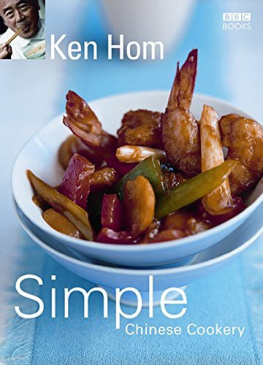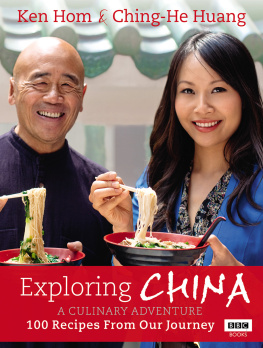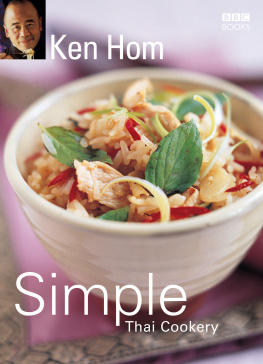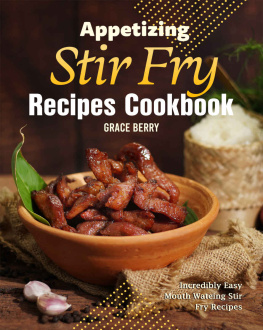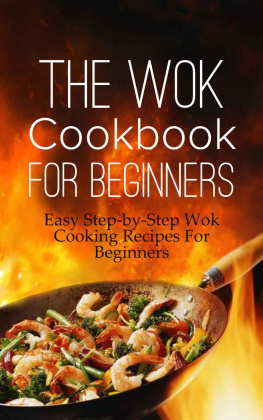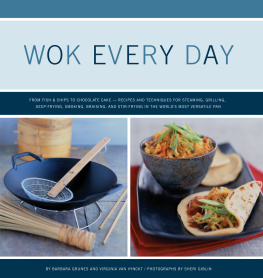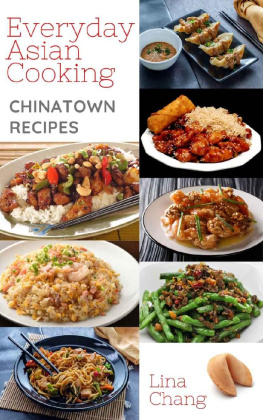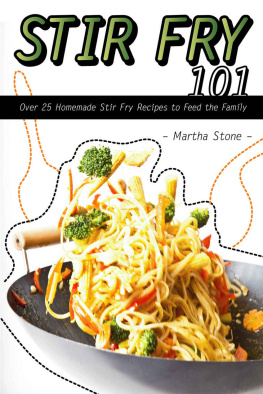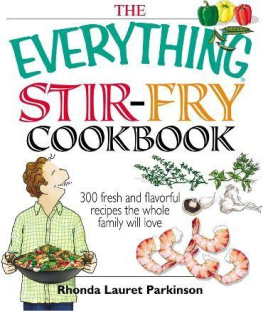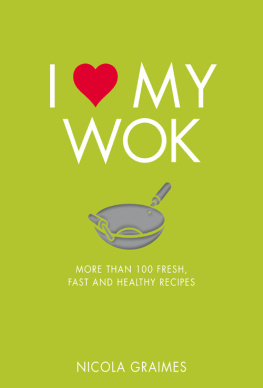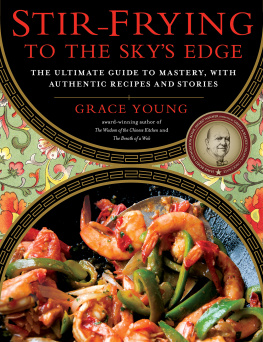For Fung Sen Tsai with love, my Auntie Amu, one of the greatest cooks I know
Contents









About the Book
As a new addition to the popular top 100 series, Ken Homs invaluable book contains 100 inspired stir-fry recipes that are easy-to-follow, delicious dishes designed to appeal to all palates.
Not only is stir-frying regarded as a healthy as well as a quick way to cook food, Ken shows us that it also offers plenty of variety. With 20 new recipes and 80 favourites from his collection, he not only covers oriental stir fries but includes non-Asian dishes as well, such as Stir-fried Fusilli alla Carbonara and Angel Hair Pasta with Spicy Tomato Sauce.
The book is helpfully divided into chapters on chicken, fish & seafood, rice & noodles, beef, pork and vegetable dishes. There are also sections on techniques for chopping and frying, how to use a wok and recommendations for oils and sauces.
As one of the most enthusiastic exponents of cooking with a wok, Ken shows us that the versatility and convenience of stir ftying need never compromise the flavour.
Ken Hom is widely regarded as one of the worlds greatest authoroties on oriental cooking and travels extensively to demonstrate his culinary skills. Ken has made several series for the BBC including Hot Wok, Travels with A Hot Wok and Foolproof Chinese Cookery. His book, Chinese Cookery, has sold over a million copies. He is also author of Foolproof Thai Cookery and the award-winning Easy Family Dishes: A Memoir with Recipes. He has written three books in the BBC Books Foolproof series, most recently, Foolproof Asian. Ken Hom is a director of Noble House Leisure Limited which includes the Yellow River Cafs and other restaurants. Ken lives in London, Paris, south-west France and Bangkok.
Introduction
Stir-frying is the most famous of all Chinese cooking techniques and it is also possibly the simplest, once you have all the ingredients prepared, measured out and immediately to hand, plus a good source of fierce heat. Its advantage is that, if done right, it enables foods to be cooked in minutes in very little oil, so they retain their natural flavours and textures. It is very important that stir-fried foods are not overcooked or made greasy.
Once you have mastered the technique, you will find that it becomes your favourite way of cooking. Stir-frying opens up endless possibilities for different combinations of foods and flavours. Using a wok is definitely an advantage, as the shape not only conducts the heat well but also enables you to toss the ingredients rapidly, keeping them constantly moving during cooking.
Once you have prepared all the ingredients for stir-frying, the steps are as follows:
Heat the wok until it is very hot before adding the oil. This prevents the food from sticking and ensures an even heat. Groundnut (peanut) oil is my favourite precisely because it can take this heat without burning.
Add the oil and, using a metal spatula or long-handled spoon, distribute it evenly over the surface. The oil should be very hot indeed almost smoking before you add the next ingredient, unless you are going to flavour it (see next point).
If you are flavouring the oil with garlic, spring onions (scallions), ginger, dried red chilli pepper, or salt, do not wait for the oil to get so hot that it is almost smoking. If you do, these ingredients will burn and become bitter. Toss them quickly in the oil for a few seconds. In some recipes, these flavourings are then removed and discarded before cooking proceeds.
Now add the ingredients as described in the recipe and proceed to stir-fry by tossing them over the surface of the wok with the metal spatula or long-handled spoon. If you are stir-frying meat, let each side rest for just a few seconds before continuing to stir. Keep moving the food from the centre of the wok to the sides. Stir-frying is a noisy business and is usually accompanied by quite a lot of splattering because of the high temperature at which the food must be cooked hence my preference for a long-handled wok ().
Some stir-fries are thickened with a mixture of cornflour (cornstarch) and cold water, which must be thoroughly blended to a smooth paste. To avoid lumps in the sauce, be sure to remove the wok from the heat for a minute before you add the cornflour (cornstarch) mixture. It can then be returned to the heat in order to thicken the sauce.
Traditional Asian cooking equipment is not essential for stir-fries but there are some items that will make it very much easier. The most important thing is to have a good wok.
Wok
A most useful and versatile piece of equipment, a wok can be used not only for stir-frying but also for blanching, deep-frying and steaming. The shape permits fuel-efficient, quick, even heating and cooking. When stir-frying, the deep sides prevent the food from spilling over.
There are two basic types of wok, the traditional Cantonese version, with short, rounded handles on either side, and the pau, sometimes called the Peking wok, which has a single 3035 cm (1214 inch) long handle. The long-handled wok keeps you at a safe distance from being splashed by hot oil or water.
The standard, round-bottomed wok may only be used on gas cookers. Woks with flatter bases are now available, designed especially for electric stoves. Although this shape really defeats the purpose of the traditional wok, which is designed to concentrate intense heat at the centre, it is better than using an ordinary frying pan because it has deeper sides.

Choosing a wok Choose a large wok preferably about 3035 cm (1214 inches) in diameter, with deep sides. It is easier and safer to cook a small batch of food in a large wok than a large quantity in a small one. Note that some modern woks are too shallow or flat-bottomed and thus no better than a frying pan. A heavier wok, preferably made of carbon steel, is superior to the lighter stainless-steel or aluminium type, which cannot take very high heat and tends to blacken, as well as scorch the food. Good non-stick carbon-steel woks that maintain the heat without sticking are now available. They need special care to prevent scratching but in recent years non-stick technology has improved, so that they can now be recommended.
Next page

